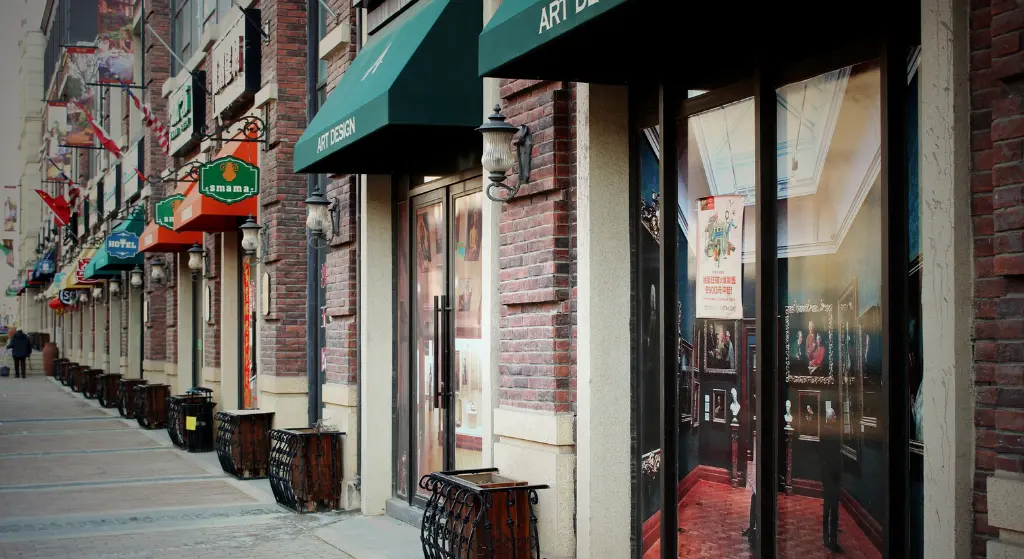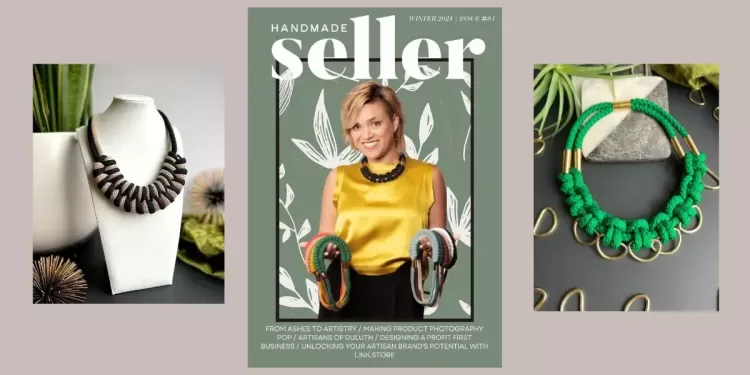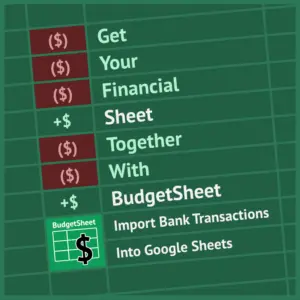If you have been making and selling your art for a long time, you are probably quite good at attracting and pleasing your customers. You listen to their stories and pay special attention when they make suggestions to you. You are also pretty good at communicating to them and sending them emails about your new products and the shows you are attending.
When you begin to sell wholesale, you might not automatically understand that your customer has changed. Of course, you still want the end user to love your products, so you make them with the same great materials and attention to detail. However, here’s the alert: the end user is no longer your customer. If they are buying what you made from a store, they’re the store’s customer.

Your New Customer
Your customer has become the store and the store owner. This is important for you to understand because it will affect everything you do in your new wholesale business. It will put another set of expectations at the top of your concerns, so let’s take a look at them so you are prepared.
Naturally, you want the store owner to buy from you, so what can you do to facilitate that? The very first thing is to commit yourself to entering a “partnership” with the retailer. Their success is the best ticket to your success. Selling wholesale is a long-term proposition. You want them to place the first order, and then many more in future years. If you view your relationship as a partnership, you will do all you can to hold up your end of deal.

Pricing Fairly
As you can expect, competition between partners usually kills the relationship. And what is the prime area for competition in your new wholesale relationship? Price! You simply cannot offer your goods to the general public at a lower price than your retail partners. If you do, they will know about it quickly, their customers will tell them, and they will see it on your website or your Etsy page.
To avoid this, you must accept that your wholesale price is your lowest and best price. Then when the retailer buys your goods at that price, understand that they will more than double it. In today’s economy, the retailer is pressured by high rent, rising employee wages, and an endless list of rising expenses. At a minimum, they will use a 2.25 multiplier to your wholesale prices.
What does this mean for you? Simply put, when you are selling your goods at retail, your price should be at least 2.25 above wholesale. If you sell it to a store for $20, you should be charging at least $45 for that same item when you sell it at an art show, on your website or on Etsy. Nothing will destroy your wholesale relationship faster than competing with the store on price. They cannot win that battle, so rather than try they will inevitably choose another wholesale partner who understands this pricing dynamic better.

The Terms of Wholesale
From the very beginning examine your wholesale terms to make them retailer-friendly. Yes, you need to have a minimum opening order because you certainly do not want to sell one item at a wholesale price. But make that opening order reasonable – it should not be a barrier for doing business with you. The exact number will depend on the cost of your goods. If you are selling jewelry with gold and gems, your minimum will be higher than someone with wood bowls. Just remember this is one of your first interactions with the retailer, so make it a comfortable one.
Many makers do not have minimum reorders, so the retailer can call with a special order. Understand that for many small retailers, special orders are a gift. It means their customer really wants to do business with them. One day in my shop a gentleman came in to purchase a necklace he had seen the previous week, but he did not charge it because it was for his wife’s anniversary and she saw the credit card bills. The necklace was $300, but sadly we had just sold it to someone else. I called the artist, and while she did not have another one in stock, she had all the components and offered to make it that afternoon and ship it overnight. The man was thrilled and even bragged about our store to other folks. Naturally, I would always do business with that jeweler, she really helped me and I could not thank her enough.
Do not “pad” your terms with excessive fees. Look for the least expensive way to ship your orders. Do not charge extra packing fees unless you have extremely fragile merchandise. Pottery is among the most fragile items to ship so it is expensive, but we know one potter who included one small free item that the retailer could sell to offset the shipping costs. Some artists include a thank you note with their orders and others put in a small treat bag for the “unpackers.”

Pay Attention to Detail
Check your orders carefully. Do not make a substitution without asking the retailer. Include a packing slip, so they can check that they received everything. If for any reason you cannot ship on time, call or email the retailer. If your kiln broke, your supply chain failed, or you got ill, tell the retailer right away, and then hustle to get it out the door as soon as possible. Believe me, the retailer is human and they will understand if something is delayed a couple weeks. But they will not be pleased if a large order of red and green ceramics never arrives in time for Christmas and you failed to warn them!
Make life easy for your store owner. Some items are difficult to display. If yours fall into that category look for a solution for them. A woodworker who made great bookmarks, also supplied us with a matching small wood cube which we set on the counter. We could easily see when we needed to reorder, and many customers added one to their purchase because it was right there by the register.
Supply tags, story cards, and your bio information so that the store can share your story and include the information in a gift box. When you are designing these materials for the store, keep your personal information such as website, email, and phone number off those pieces. Remember the end user is the store’s customer, not yours, and the store does not want them ordering from you – so no Etsy store info!
If you have boxes for your products, ask the store if they want them. Most stores have their own branded packaging, especially for items like jewelry, so they might not want yours. If your earrings are on cards, it’s fine if they have your name and logo, but no ordering information. For some larger or unusual items, the store owner might be very grateful for your box, so just ask.
When you have the chance to meet or speak to your retail partner, listen up! They may have great suggestions for new products, designs, or colors. Take their concerns to heart. Most importantly, always be forthright and honest with them, and be reliable. In the long-run, they will treasure you as a partner because their customers love your products and you make their retail life easier.
Interested in a subscription to the magazine?
Interested in a digital or print subscription to our quarterly magazine? Or are you interested in reading back issues of the magazine?







